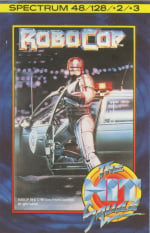
We imagine there are many people who, over the years, have pondered why the name 'Ocean Software' appears on so many RoboCop video games.
Arguably the most famous adaption of the classic 1987 movie is Data East's coin-op, which was a global smash-hit and made its way into amusement arcades all over the world – yet it has Ocean's name on the title screen, alongside Data East's.
Those in the know will be fully aware why this is the case – UK-based Ocean Software was savvy enough to pick up the electronic entertainment rights for the film, and did so before it had even begun shooting. It then sub-licensed Japanese firm Data East to create the arcade game, which Ocean then ported to home computers like the ZX Spectrum, C64, Atari ST and Commodore Amiga.
All of this was a tremendous gamble at the time, but what Ocean actually paid for the rights remains incredible, especially in the context of modern-day media licensing.
Speaking in a deleted scene from the excellent 2023 documentary RoboDoc: The Creation of Robocop, Ocean's Software Director Gary Bracey explains that it only cost the company "around $10,000" to secure the global video game rights to Paul Verhoeven's '80s classic.
"The decision to license the game was based purely on reading Ed Neumeier's script," Bracey told Eurogamer back in 2014. "It just seemed to resonate with me - the combination of action and the genre made it very compelling."
However, during that particular interview, he suggests that the fee was more like $20,000 – which was still a drop in the ocean (no pun intended) when you consider that, on home formats alone, the game sold over a million copies and was one of the best-selling home computer games of the entire decade, while the arcade original was one of 1988's most commercially successful releases.
When you factor in the fact that RoboCop was subsequently released on consoles like the NES and Game Boy, one can only imagine how much revenue that initial payment generated for Ocean – but, as Bracey explains, licencing key media properties was all part of the company's overarching strategy:








